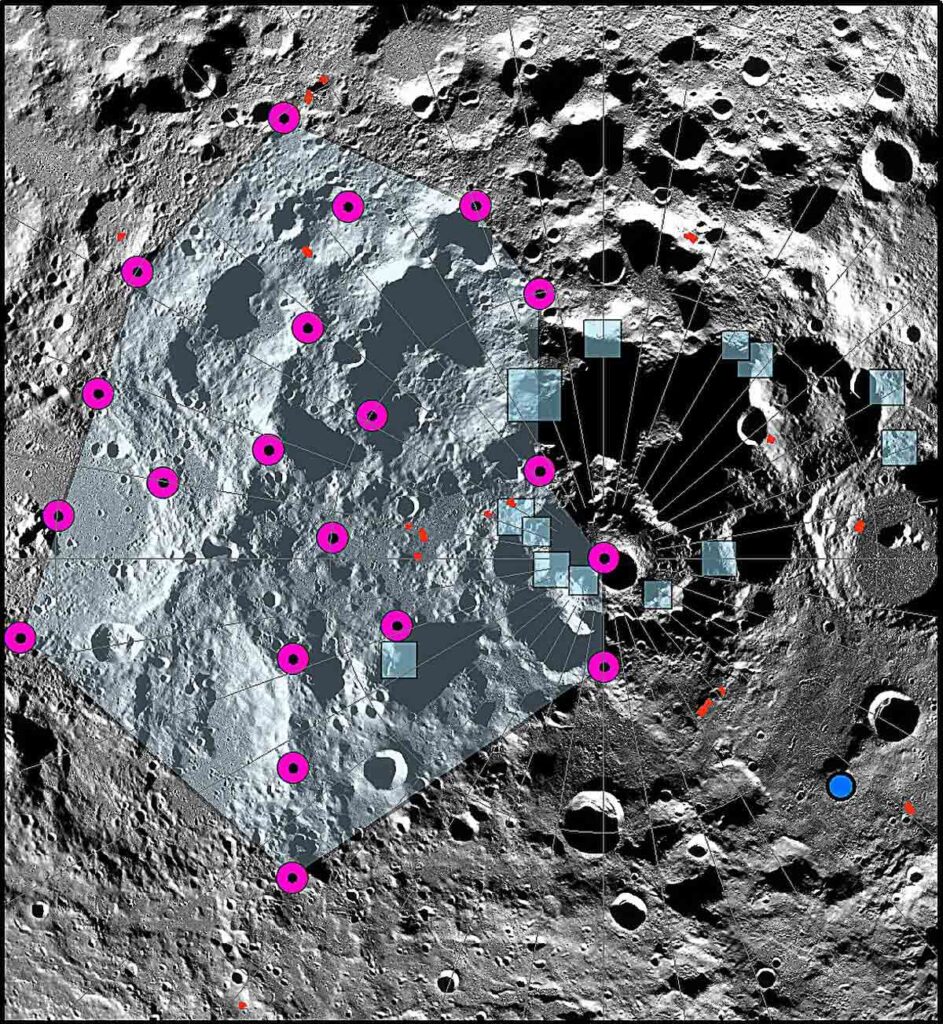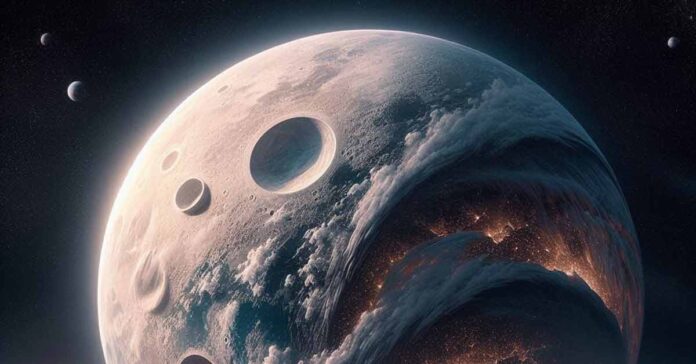In a cosmic revelation, Earth’s moon has undergone a significant transformation, diminishing more than 150 feet in circumference over millions of years due to the gradual cooling of its core.
Much like a grape wrinkles into a raisin, the moon exhibits creases as it contracts.
Unlike the flexible skin of a grape, the moon’s surface, being brittle, results in the formation of faults where crust sections collide.
Lunar Contractions and Seismic Hazards
A recent scientific study has unveiled that the moon’s ongoing shrinkage has induced notable surface warping, particularly in its south polar region—an area identified for potential crewed Artemis III landings by NASA.
The formation of faults, stemming from the moon’s contraction, is often accompanied by moonquakes, raising concerns about the safety of future human exploration efforts.
The Planetary Science Journal published a paper connecting a set of faults in the moon’s south polar region to a powerful moonquake recorded by Apollo seismometers more than 50 years ago.
The research team utilized models to simulate surface slope stability, identifying areas vulnerable to landslides triggered by seismic activity.

Understanding the Lunar Landscape
Lead author Thomas R. Watters, a senior scientist emeritus at the National Air and Space Museum’s Center for Earth and Planetary Studies, highlights the implications of their findings: “Our modeling suggests that shallow moonquakes, capable of producing strong ground shaking in the south polar region, are possible from slip events on existing faults or the formation of new thrust faults.”
The study emphasizes the need to consider the global distribution of young thrust faults and their potential activity when planning the location and stability of permanent outposts on the moon.
Moonquakes: A Lunar Threat
Shallow moonquakes, occurring near the moon’s surface, resemble earthquakes and can potentially cause significant damage to structures.
Unlike their terrestrial counterparts, these lunar quakes can last for hours.
Nicholas Schmerr, co-author of the paper and associate professor of geology at the University of Maryland, underscores the risk: “Shallow moonquakes can devastate hypothetical human settlements on the moon due to the loose, gravel-like nature of the lunar surface.”
Implications for Future Moon Exploration
With NASA’s Artemis missions scheduled for a crewed flight in late 2024, the research gains urgency.
The missions aim to establish a long-term presence on the moon, necessitating a thorough understanding of lunar seismic activity.
Schmerr notes, “This work is helping us prepare for what awaits us on the moon—whether engineering structures to withstand lunar seismic activity or safeguarding against dangerous zones.”
As humanity ventures closer to the moon with ambitious exploration plans, ensuring the safety of astronauts and infrastructure becomes paramount.
The study serves as a crucial guide for anticipating challenges and fortifying our presence on the moon.
FAQ
The moon is shrinking due to the gradual cooling of its core over millions of years, causing it to contract, much like a grape wrinkles when it turns into a raisin.
Faults on the moon’s surface are formed as a result of its contraction. Unlike flexible surfaces, the moon’s brittle surface causes sections of the crust to push against each other, leading to fault formation.
Fault formation on the moon is often accompanied by seismic activity known as moonquakes. The study in question links a group of faults in the moon’s south polar region to one of the most powerful moonquakes recorded over 50 years ago.
Shallow moonquakes, occurring near the moon’s surface, are similar to earthquakes but can last for hours. Unlike earthquakes that typically last seconds or minutes, shallow moonquakes are caused by faults in the moon’s interior and can potentially cause damage to structures on the lunar surface.
More information: Watters et al, Tectonics and Seismicity of the Lunar South Polar Region, The Planetary Science Journal (2024). DOI: 10.3847/PSJ/ad1332

